Laos Coffee Lao Coffee origin information Coffee cultivation situation full introduction
For professional baristas, please follow the coffee workshop (Wechat official account cafe_style)
Basic national information
Chinese name: Laos
Full name: Lao people's Democratic Republic
Alias: Laos (common in Singapore, Taiwan, Malaysia)
English name: Lao People's Democratic Republic, abbreviated Lao PDR
Continent: Asia
Area: 236800 square kilometers
Population: 6.89 million (2014)
Capital: Vientiane, Vientiane
Total GDP: $12.369 billion (2015, international exchange rate)
Per capita GDP:1818 USD (2015, international exchange rate)
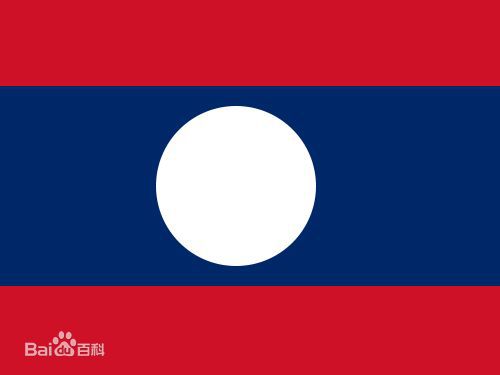
History
Laos has a long history. According to ancient records, it belonged to Funan State from the 1st century to the end of the 7th century. Later he belonged to the kingdom of Zhenla.
It was Nanzhang from the 13th to 18th centuries, then invaded by Siam and Vietnam, and then invaded by France.
It was colonized by France in 1893.
It was occupied by Japan in September 1940.
He became independent in 1945.
In 1975, the monarchy was abolished and a republic was established.
Laos is a member of the Association of Southeast Asian Nations and one of the least developed countries.
He joined ASEAN in July 1997.
Administrative division
Laos, located in Southeast Asia, is a landlocked country, bordering China in the north, Vietnam in the east, Cambodia in the south, Thailand in the west and Myanmar in the northwest.
The Mekong River, which originates in China, is the largest river in Laos, flowing 1900 kilometers west and through the capital Vientiane. It is 234km long as the border between Laos and Myanmar and 976.3 km between Laos and Thailand.
The country is divided into 17 provinces and 1 municipality directly under the Central Government. The territory of Laos is long in the shape of north and south, and the provinces can be divided into Shangliao, Zhongliao and Xialiao.
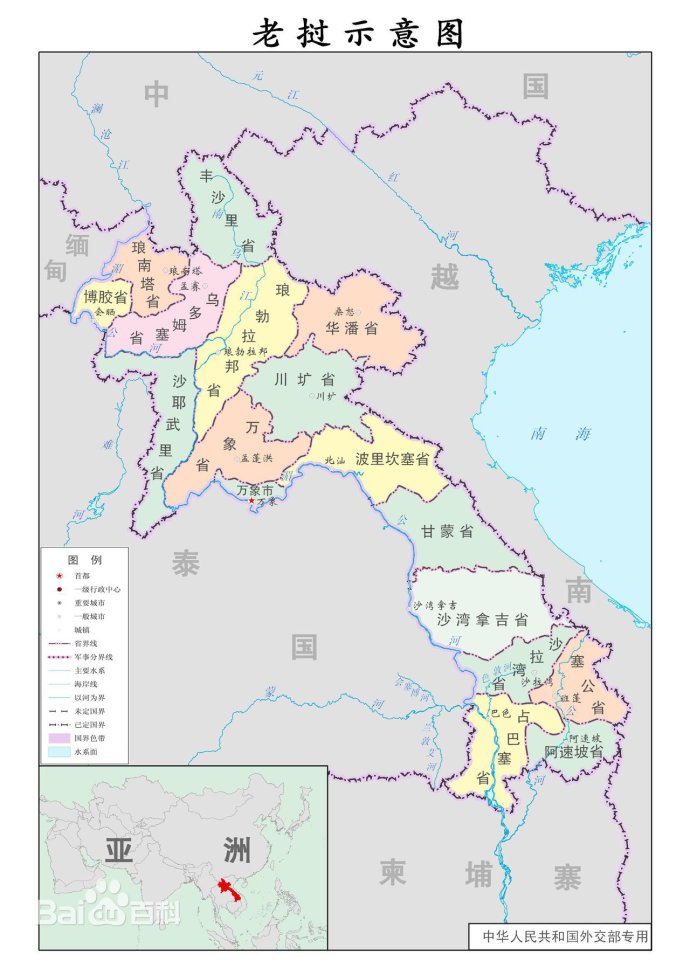
Topography and climate
Laos is 80% mountainous and plateau, and mostly covered by forest, known as the "roof of Indochina."
The terrain is high in the north and low in the south, bordering the western Yunnan Plateau of Yunnan in the north, the Changshan Mountains on the border between Laos and Vietnam in the east, and the Mekong Valley and basins and small plains along the Mekong River and its tributaries in the west.
The whole country is divided into Shangliao, Zhongliao and Xialiao from north to south. Shangliao is the highest, with an elevation of 2000,800 meters above sea level on the Chuanfeng Plateau and 2820 meters above sea level on Mount Pubia.
Laos has a tropical and subtropical monsoon climate, with a rainy season from May to October and a dry season from November to April. The annual average temperature is about 26 ℃. There is abundant rainfall in Laos, with the youngest annual precipitation of 1250 mm, the maximum annual precipitation of 3750 mm, and the average annual precipitation of about 2000 mm.
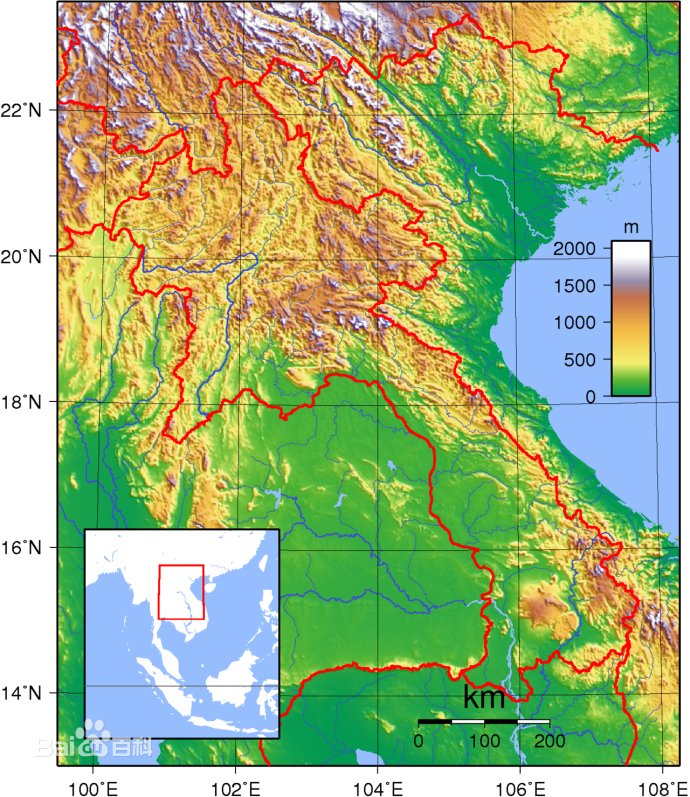
A brief History of Coffee
Coffee cultivation in Laos has a history of about 100 years. It was originally introduced by the French.
Coffee cultivation can be divided into four stages:
From 1920 to 1940, the French introduced coffee and operated coffee farms, and local farmers gradually began to grow coffee.
From 1940 to 1975, affected by external factors such as war and agricultural disasters, farmers mostly abandoned coffee or switched to Robusta.
From 1975 to 1990, develop state-owned coffee farms and pursue high production.
In 1990, the farm returned to private ownership.
Coffee variety
Around 1920, French settlers began to grow coffee, mainly Arabica iron pickup and bourbon, on the Brawan plateau in southern Laos.
From 1940 to 1990, under the influence of external environment, such as war, agricultural disasters (mainly frost and leaf rust) and national policy, coffee varieties were gradually replaced by Robota species with stronger disease resistance and higher yield, and there were also a few Liberika species.
After 1990, the Arabica species began to receive renewed attention.
At present, the output of Robusta is still in the majority.
Table 1 Total output of coffee in Laos 2013-2016 (unit: 000 bags, each bag 60kg)
Year
2013
2014
2015
2016
Output
five hundred and fifty
five hundred and six
four hundred and sixty seven
five hundred
(source: ICO)
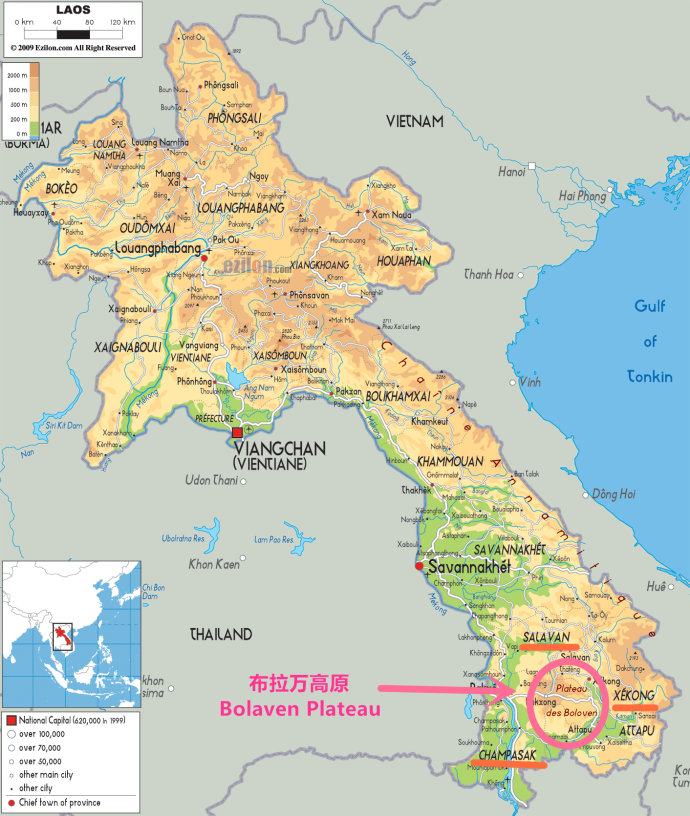
Traditional coffee producing areas: Bolaven Plateau, Brawan Plateau
Bolaven Plateau, Brawan Plateau, the name comes from the region's most populous ethnic group "the Laven", which originally means "the home of the Lavan people". It is located between the Annan Mountains, the border between Laos and Vietnam to the east, and the Mekong River to the west at an altitude of about 1000 to 1350 meters (3300 to 4430 feet).
The Brawan Plateau has the longest history of coffee cultivation in Laos, and it is also the region with the widest planting area and the largest coffee production. Among them, the three areas covered by the plateau (namely, Basong Paksong in Basong province, Thateng in Saravan province and Laongam in Sekong province) account for 95 per cent of the total coffee production in Laos. The coffee planting area in the three regions is about 70000ha.
In addition to the three areas mentioned above, coffee is also produced in other areas of the Brawan Plateau.
In addition, coffee is also grown in the northern provinces on a smaller scale.
Picture: coffee planting area of Laos provinces (2011-2012)
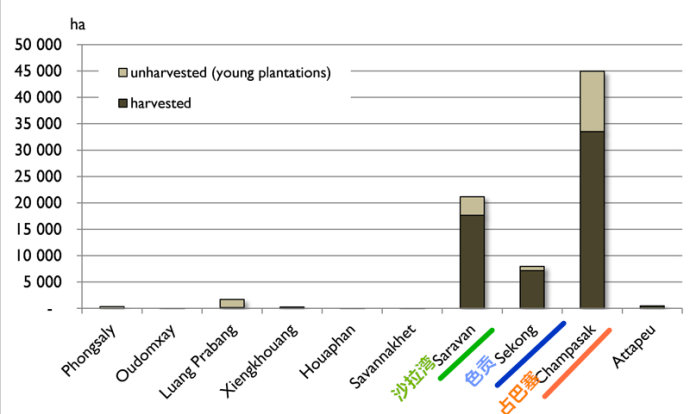
(source: Lao Coffee Association)
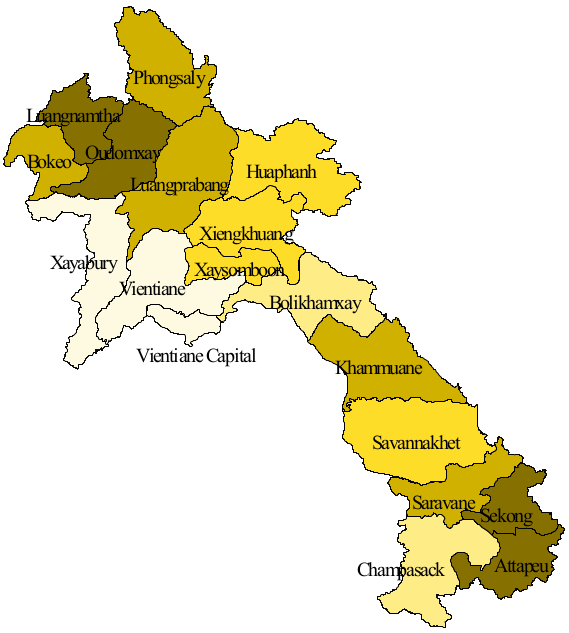
Coffee and Travel
The Brawan Plateau is famous for its pleasant climate, magnificent waterfalls and high-quality coffee, such as Taat Fang (also known as Dong Hua Sao), which has the largest drop (120m) in Laos, and Paksong, a small town known as the "coffee market".
The coffee and beauty of the Brawan Plateau have been listed in National Geographic magazine and recommended in Lonely Planet.
Most of the coffee farms here, like their American counterparts, operate coffee farms as well as coffee trips.
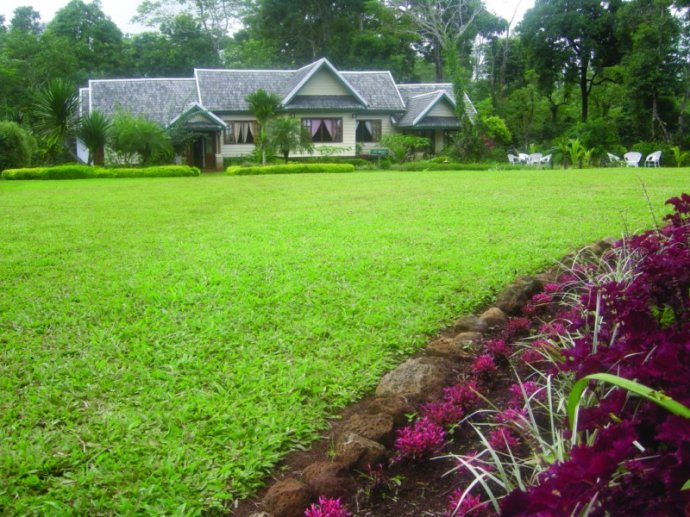
Important Notice :
前街咖啡 FrontStreet Coffee has moved to new addredd:
FrontStreet Coffee Address: 315,Donghua East Road,GuangZhou
Tel:020 38364473
- Prev
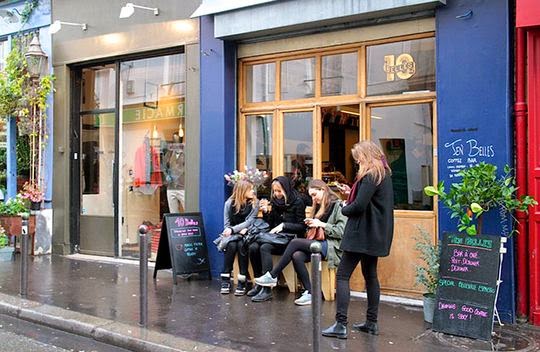
Boutique Coffee Wave-five selected Coffee shops in Paris
Communication of professional baristas Please follow the Coffee Workshop (official Wechat account cafe_style) many people come to France to travel, the impression of coffee is nothing more than left bank coffee, a small black espresso, sitting at the bar or the door, watching people are also looked at, sometimes several cups a day to enjoy. But in recent years, there have been some new cafes in Paris, except
- Next
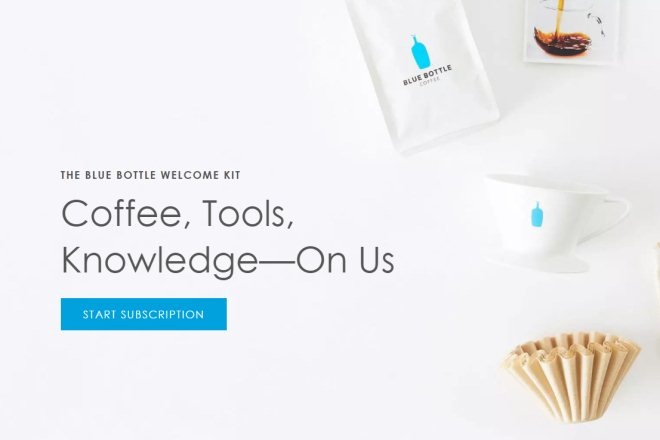
The 10 most likely to be the next Starbucks chain of boutique coffee shops
Professional baristas Please follow the Coffee Workshop (official Wechat account cafe_style) although some big companies have entered the high-end coffee market, Starbucks' monopoly is still strong. Analyst John Glass said in a note: the importance of high-end chains such as Starbucks to the whole industry is self-evident, so both public and private investors are interested in this kind of company.
Related
- What documents do you need to go through to open a coffee shop? coffee shop coffee shop certificate processing process
- How to purchase Coffee beans in small Cafe how to choose a suitable supplier for domestic Coffee supply Company
- How to drink Starbucks Fragrance White Coffee? how to make Australian White Coffee? what Italian coffee beans are recommended?
- The Story of Flora Coffee: the name of Flora Coffee Bean and the implication of the Flowers on Florna Coffee
- How much does a cup of coffee cost? How much is the profit of a cup of coffee? What is the profit of the coffee shop in a year?
- Yunnan small Coffee, known as "fragrant Coffee", introduces the characteristics of Alpine Arabica Coffee producing areas in Yunnan, China
- 2023 latest Starbucks full menu price list how much is a cup of Starbucks coffee what is better to drink the most popular hot and cold drinks recommended
- Starbucks different kinds of Coffee Price list Starbucks menu 2023 Top Ten Best drinks in Starbucks
- Starbucks Spring praise Comprehensive matching Coffee Bean theme Story Packaging implication and taste description
- The cost of a cup of coffee latte American coffee cost price and selling price

